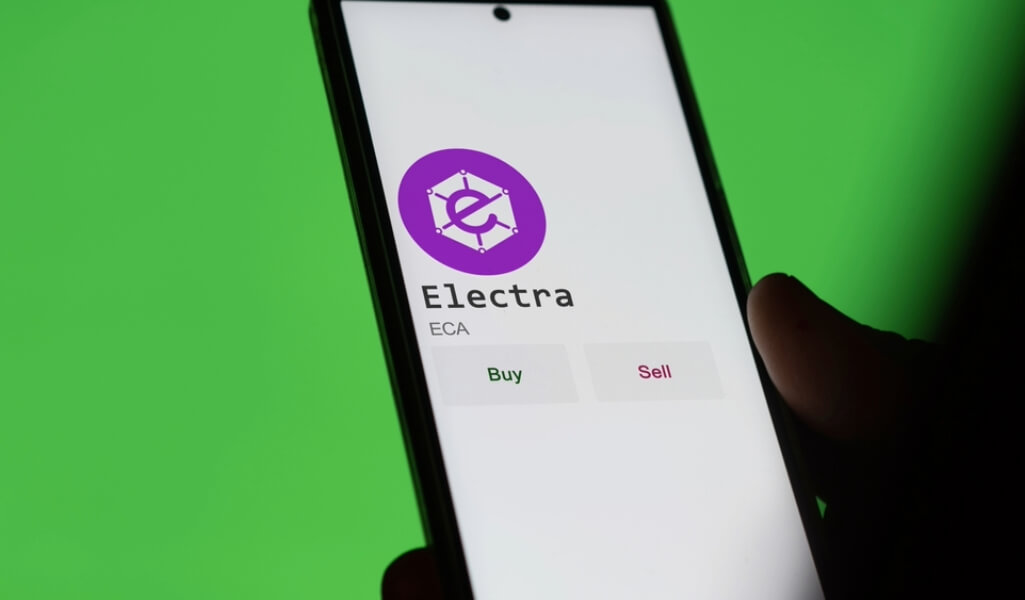
How to Buy Electra Coin? Full Guide on Buying ECA
Investors from all over the world are looking for cryptocurrencies that have the potential to change the crypto world.
There is no lack of cryptocurrencies. So, it could take a lot of time to find such cryptocurrencies. Are you interested in Electra Coin?
One of the most important questions is, ‘How to buy Electra Coin?’ Let’s start from the beginning.
Step 1: Download a crypto wallet
Start by selecting a suitable cryptocurrency wallet that supports Electra (ECA) and is compatible with your region and preferred payment method. You have the option to choose between a desktop wallet (using the Google Chrome extension) or a mobile wallet from the iOS App Store or Google Play.
Step 2: Set up your wallet
After downloading your chosen wallet, follow these steps:

- Register and set up your wallet account, following the wallet provider’s instructions.
- Take note of your wallet address and securely store your seed phrase. Your seed phrase is crucial for wallet recovery, so ensure it is kept in a safe and confidential location.
What about step 3?
The next step when it comes to questions like, ‘How to buy Electra Coin?’ is very important. You need to buy your base currency.
Now that you have a wallet set up, you need to acquire a base currency (e.g., Bitcoin or Ethereum) to use for trading into Electra (ECA). To do this:
- Create an account on a cryptocurrency exchange that allows you to buy the base currency with your preferred payment method. Research and choose an exchange that suits your needs.
- Follow the exchange’s onboarding process, including identity verification if required.
- Navigate to the “Buy & Sell Crypto” section of the exchange to purchase your chosen base currency using your preferred payment method.
Step 4: Send your base currency to your crypto wallet
After purchasing your base currency on the exchange:
- Access your wallet.
- Locate the coin you purchased in the wallet interface.
- Select “withdraw” or “send” to initiate a transfer.
- Provide the required information, including the correct network (e.g., Ethereum or Binance Smart Chain), your wallet address (from step 2), and the amount you want to transfer.
- Confirm the withdrawal and wait for your base currency to appear in your wallet.
Choose a decentralized exchange (DEX)
Let’s discuss step number five.
You need to pick a decentralized exchange (DEX) that supports Electra (ECA) trading and is compatible with your chosen wallet (from step 2). For example, if you’re using the Binance wallet, you can use PancakeSwap on the Binance Smart Chain.

Step 6: Connect your wallet and trade your base currency with Electra (ECA)
Proceed as follows:
- Use the wallet address generated in step 2 to connect your wallet to the chosen DEX.
- In the DEX interface, select Electra (ECA) as the cryptocurrency you want to purchase.
- Select your base currency (the one you bought in step 3) as the payment currency.
- Enter the amount you want to trade, and review the transaction details.
- Confirm the trade, and the Electra (ECA) tokens will be swapped for your base currency in your wallet.
Locate Electra (ECA) Smart Contracts (if necessary)
If Electra (ECA) is not listed on the DEX, you can find its smart contract address using blockchain explorers like BscScan or Etherscan. Follow these steps:
- Visit the relevant blockchain explorer (e.g., BscScan for Binance Smart Chain or Etherscan for Ethereum).
- Search for Electra (ECA) or the token’s symbol.
- Locate the correct smart contract address and copy it.
- Return to the DEX (e.g., PancakeSwap) and paste the Electra (ECA) smart contract address to initiate the trade.
What is a decentralized exchange?

As can be seen from the information stated above, it isn’t hard to answer questions about Electra such as ‘How to buy Electra Coin?’
However, it is vital to gather more information about decentralized exchanges as well.
A decentralized exchange (DEX) is a type of cryptocurrency exchange that operates without a central authority or intermediary. It allows users to trade cryptocurrencies directly with one another, peer-to-peer, without the need for a traditional intermediary like a bank or a centralized exchange. Here are some key characteristics and advantages of decentralized exchanges:
Peer-to-peer trading: In a DEX, users can trade cryptocurrencies directly with one another, eliminating the need for an intermediary to facilitate the trade. This peer-to-peer nature promotes decentralization and reduces counterparty risk.
Control and ownership: Users have full control and ownership of their funds on a DEX. They retain control of their private keys and wallets, which reduces the risk of hacking or theft associated with centralized exchanges.
Privacy: DEXs often prioritize user privacy. Users can trade without the need for extensive identity verification, unlike many centralized exchanges that require Know Your Customer (KYC) procedures.
Security: DEXs can be more resistant to hacking attempts because they do not store users’ funds in a centralized location. Instead, assets are typically held in users’ wallets until a trade is executed, reducing the attractiveness of DEXs as targets for hackers.
Censorship resistance: Decentralized exchanges are resistant to censorship and government intervention. They operate on blockchain technology, which is typically decentralized and immutable. This makes it difficult for any entity to shut down or control the exchange.
Global access

DEXs are accessible to users worldwide, provided they have an internet connection and compatible wallets. This inclusivity enables users from different countries to participate in the cryptocurrency market without geographical restrictions.
Liquidity pools: Many DEXs use liquidity pools to facilitate trading. Users can provide liquidity to these pools and earn fees in return. This mechanism allows for a constant supply of assets available for trading.
Reduced fees: DEXs often have lower fees compared to centralized exchanges. This is because they do not have the same overhead costs associated with running a traditional exchange. However, users may still incur network fees for blockchain transactions.
Popular decentralized exchanges include Uniswap, SushiSwap, PancakeSwap, and more, each operating on different blockchain networks like Ethereum, Binance Smart Chain, and others. They offer various features and support a wide range of cryptocurrency trading pairs.
Despite their advantages, DEXs also face challenges. Liquidity can be an issue, especially for less popular tokens, and the user experience may be less intuitive for beginners compared to centralized exchanges. Additionally, regulatory concerns and compliance requirements can vary by jurisdiction, which may affect the operation of DEXs.
To sum up, please exercise caution when engaging in cryptocurrency transactions, ensure you have the correct contract address to avoid scams, and consider your risk tolerance and investment goals. Cryptocurrency investments can be volatile, and it’s advisable to do thorough research and possibly consult with a financial advisor before making any significant investments.




